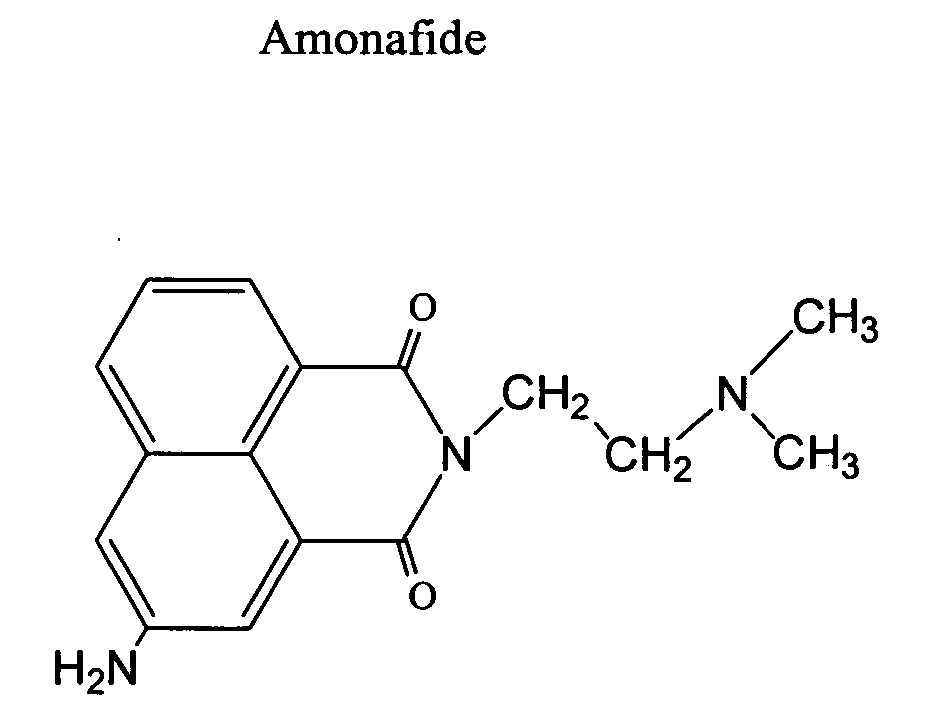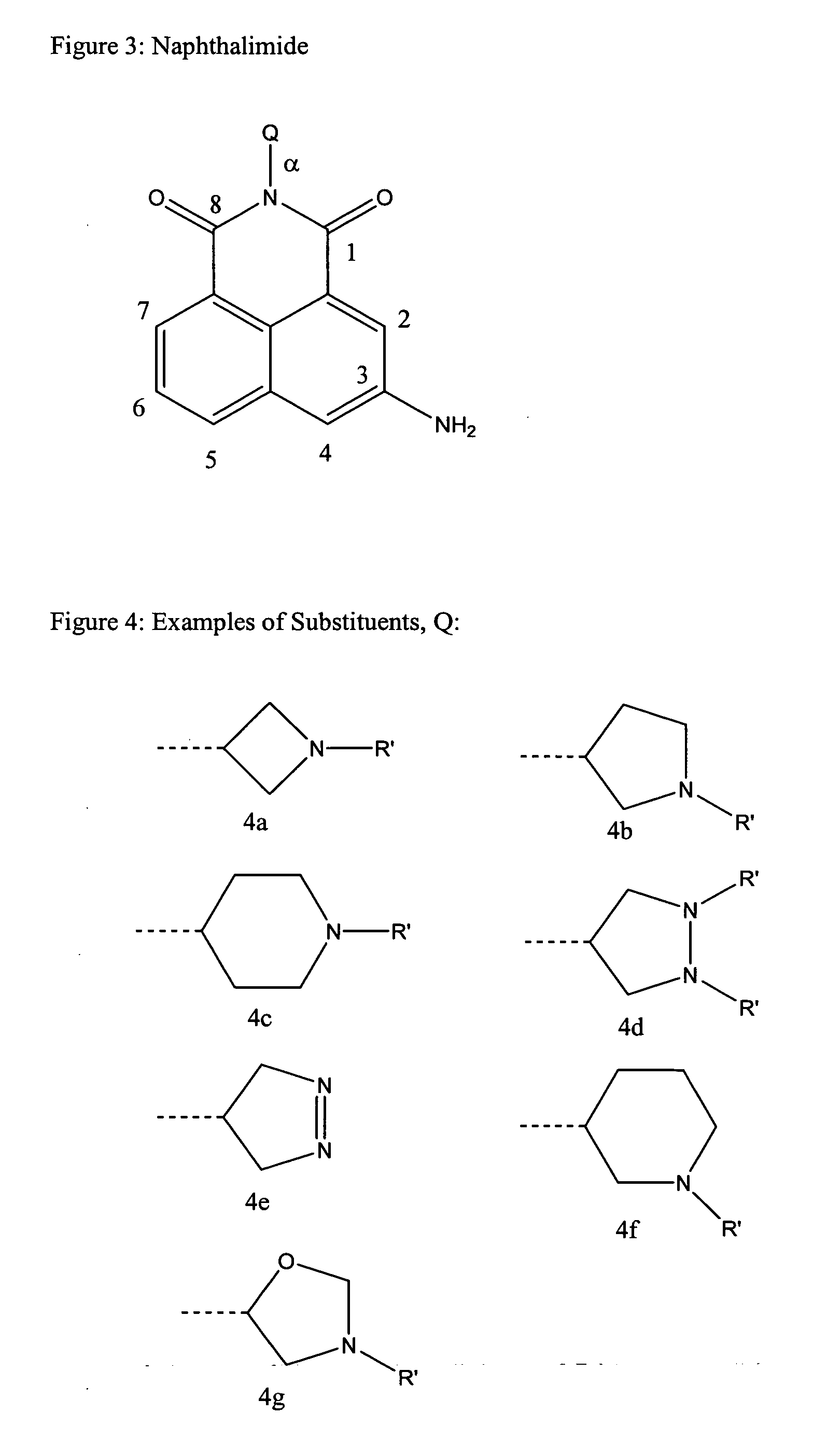Naphthalimide dosing by N-acetyl transferase genotyping
a technology of n-acetyl transferase and genotyping, which is applied in the direction of biocide, heterocyclic compound active ingredients, drug compositions, etc., can solve the problem that the use of human chemotherapy has not been approved
- Summary
- Abstract
- Description
- Claims
- Application Information
AI Technical Summary
Benefits of technology
Problems solved by technology
Method used
Image
Examples
example i
[0096] This example describes patient genotyping to improve dosing of naphthalimide to reduce potential toxic side effects.
[0097] Thirty-two (32) patients were treated amonafide dihydrochloride. Sixteen (16) were male and sixteen (16) were female. The mean age was 65 years. The dose schedule was days 1, 8, 15 and thereafter every 28 days. The dosages ranged from 300 to 500 mg / m2 in a dose escalation studied to determine dose limiting toxicity (DLT).
[0098] Patients were genotyped to determine their NAT-2 (N-acetyl transferase) genotype. See D. W. Hein, et al., “Molecular Genetics and Epidemiology of the NAT1 and NAT2 Acetylation Polymorphisms,”Cancer Epidemiology, Biomarkers &Prevention Vol. 9, 29-42, January 2000. Fourteen (14) patients had the slow acylator genotype whereas eighteen (18) patients were fast acylators having either the rapid (liomozygous) or intermediate (heterozygous) genotype.
[0099] Serum levels of amonafide and acetyl amonafide were determined by HPLC. A signif...
PUM
 Login to View More
Login to View More Abstract
Description
Claims
Application Information
 Login to View More
Login to View More - R&D
- Intellectual Property
- Life Sciences
- Materials
- Tech Scout
- Unparalleled Data Quality
- Higher Quality Content
- 60% Fewer Hallucinations
Browse by: Latest US Patents, China's latest patents, Technical Efficacy Thesaurus, Application Domain, Technology Topic, Popular Technical Reports.
© 2025 PatSnap. All rights reserved.Legal|Privacy policy|Modern Slavery Act Transparency Statement|Sitemap|About US| Contact US: help@patsnap.com



